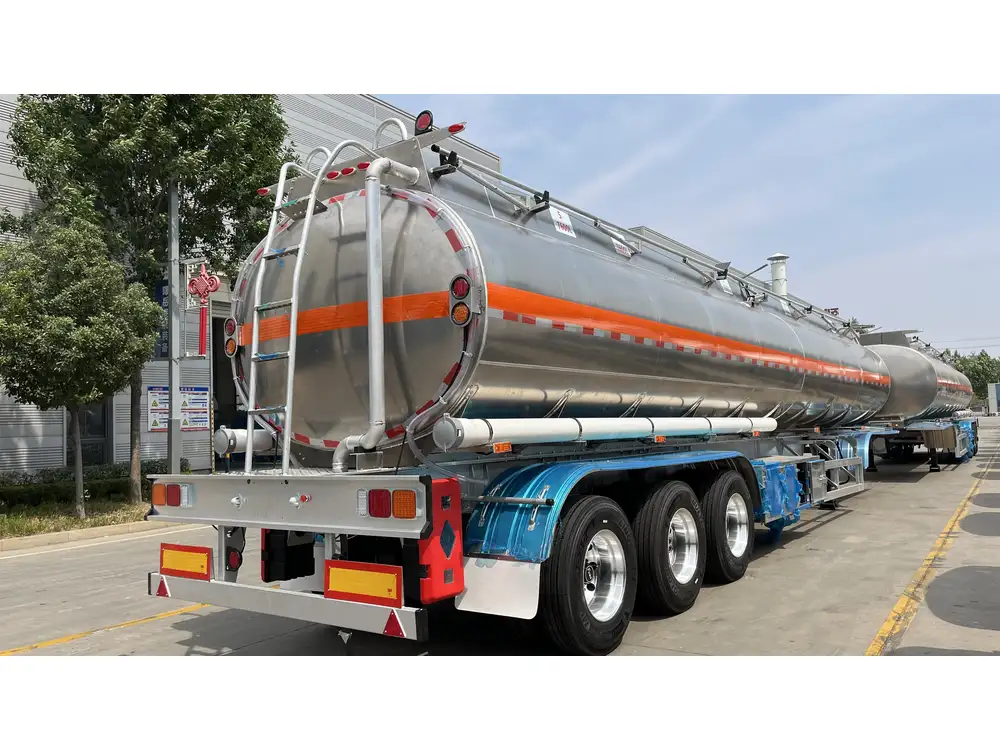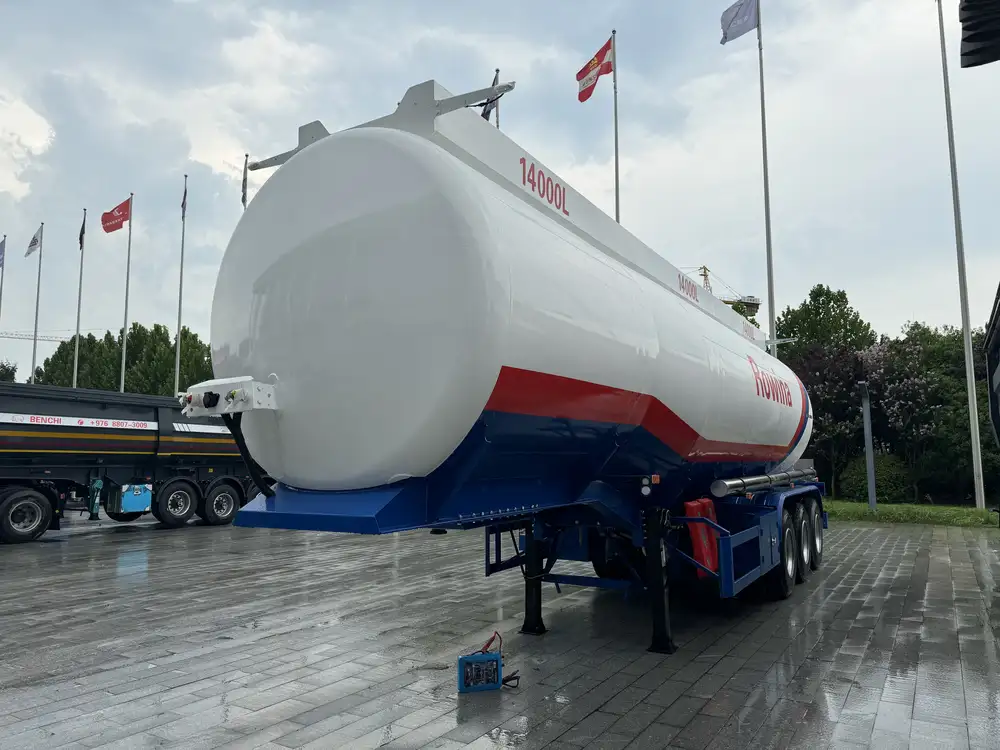Understanding Trailer Suspension Systems
Trailer suspension systems are a crucial element in heavy-duty transport, as they directly affect ride quality, load stability, and overall vehicle performance. Among the various components of these systems, the dump valve plays a pivotal role, particularly in air suspension setups. This valve allows for the rapid release of air from the suspension air bags, lowering the trailer; a process essential for loading and unloading cargo.
Key Components of a Trailer Suspension System
To appreciate the importance of the dump valve, it’s beneficial to understand the broader context of the trailer suspension system:
| Component | Function |
|---|---|
| Air Bags | These inflate to support the trailer’s weight, providing a cushioned ride. |
| Shock Absorbers | Control bounce and sway during transit. |
| Leaf Springs | Offer additional support and flexibility for heavy loads. |
| Dump Valve | Quickly expels air from the air bags, lowering the trailer height for easier access. |

The Functionality of the Dump Valve
The dump valve, often electronically or manually controlled, enables the driver or operator to lower the trailer swiftly. It serves multiple purposes including:
- Easier Loading and Unloading: A lowered trailer facilitates the process, minimizing the effort required to lift heavy equipment or containers.
- Stability During Parking: By lowering the trailer, the center of gravity is reduced, enhancing stability.
- Maintenance Accessibility: For maintenance or inspections, a lowered trailer can simplify accessibility to critical components.
Common Issues with Dump Valves
Understanding potential issues with dump valves can help prevent malfunctions and ensure a smooth operation. Here are the typical problems we often observe:
- Leakages: Air leaks can occur at the dump valve, leading to loss of pressure in the suspension system.
- Blockages: Dirt, debris, and corrosion can accumulate, hindering the valve’s operation.
- Electrical Failures: In electronically activated valves, wiring issues can disrupt functionality.
- Manual Control Problems: For manually operated valves, wear and tear can impede their ease of use.
How to Check a Trailer Suspension Dump Valve
To ensure that the dump valve operates effectively, we must engage in a systematic checkup process. Below are detailed steps to guide you through checking a trailer suspension dump valve.

Step 1: Safety First
Before diving into any inspection, prioritize safety:
- Park on a Flat Surface: Ensure that the trailer is stationed on an even surface.
- Use Wheel Chocks: Prevent any movement by placing chocks behind the wheels.
- Wear Protective Gear: Safety goggles and gloves are essential when working around heavy machinery.
Step 2: Visual Inspection of the Dump Valve
- Locate the Dump Valve: Typically situated near the air suspension system, frame-mounted, or integrated within the air bag assembly.
- Inspect for Physical Damage: Look for cracks, corrosion, or loose connections. Any visible damage could indicate a problem.
- Check the Air Lines: Ensure air lines connected to and from the dump valve are secure and free from damage or leaks.
Step 3: Functional Test
Conduct a functional test to assess operational integrity:
- Manual Activation: If equipped with a manual valve, operate it to see if the trailer lowers quickly and responds appropriately.
- Electronic Activation: For electronically controlled valves, activate the dump valve via the dashboard or trailer control system:
- Observe the Response: The air suspension should release air smoothly, causing the trailer to lower promptly.
- Listen for Unusual Sounds: Any hissing or unusual noises may indicate a leak or malfunction.

Step 4: Check for Air Leaks
Air leaks can be addressed with the soap and water method:
- Prepare a Soap Solution: Mix water with a mild detergent to create a soapy solution.
- Apply Solution: Coat the connections and valve surfaces with the solution.
- Observe for Bubbles: If bubbles form, it indicates an air leak, and immediate repairs should be made.
Step 5: Further Troubleshooting
If issues are detected, further troubleshooting is necessary:
| Issue | Potential Causes | Solutions |
|---|---|---|
| Dump valve not activating | Electrical fault, blown fuses | Inspect wiring and replace fuses |
| Trailer not lowering fast | Air blockage, valve malfunction | Clear blockages or replace the valve |
| Slow response to manual control | Wear in the manual lever | Lubricate or replace parts |
Step 6: Professional Inspection
If the problem persists or if you uncover any severe issues, consulting a professional is wise. A qualified technician can diagnose complex problems that may not be easily visible and can perform necessary repairs or replacements.

Regular Maintenance Tips
Proactive inspection and maintenance of the dump valve can extend its lifespan and optimize performance. Here are best practices to incorporate into your regular maintenance schedule:
- Routine Visual Checks: Monthly checks for damages or leaks can prevent future issues.
- Lubrication: Regular lubrication of moving parts ensures smooth operation and reduces wear.
- Air Pressure Checks: Ensure that the air system is running at optimal pressure levels.
- Service Intervals: Adhere to manufacturer recommendations regarding service intervals and inspections.
Consequences of Neglecting Dump Valve Maintenance
Neglecting the dump valve can lead to various alarming consequences:
- Unsafe Loading Conditions: A malfunctioning dump valve could result in improper loading angles, risking cargo balance.
- Increased Wear on Suspension Components: Continuous operation without proper function can wear out other suspension parts, leading to higher repair costs.
- Operational Downtime: Unexpected failures can result in vehicle downtime, disrupting schedules and reflecting poorly on operational reliability.
Conclusion
In the complex world of trailer suspension systems, understanding and maintaining the dump valve is essential for ensuring safety and efficiency on the road. By following the outlined steps to check, troubleshoot, and maintain the dump valve, we can alleviate numerous operational concerns while enhancing overall vehicle performance. Regular maintenance and prompt repairs not only ensure the longevity of the valve itself but contribute significantly to the overarching health of the trailer’s suspension system.
By committing to these practices, we can ensure that our trailers remain in optimal condition, ready to tackle the challenges of any haul.



